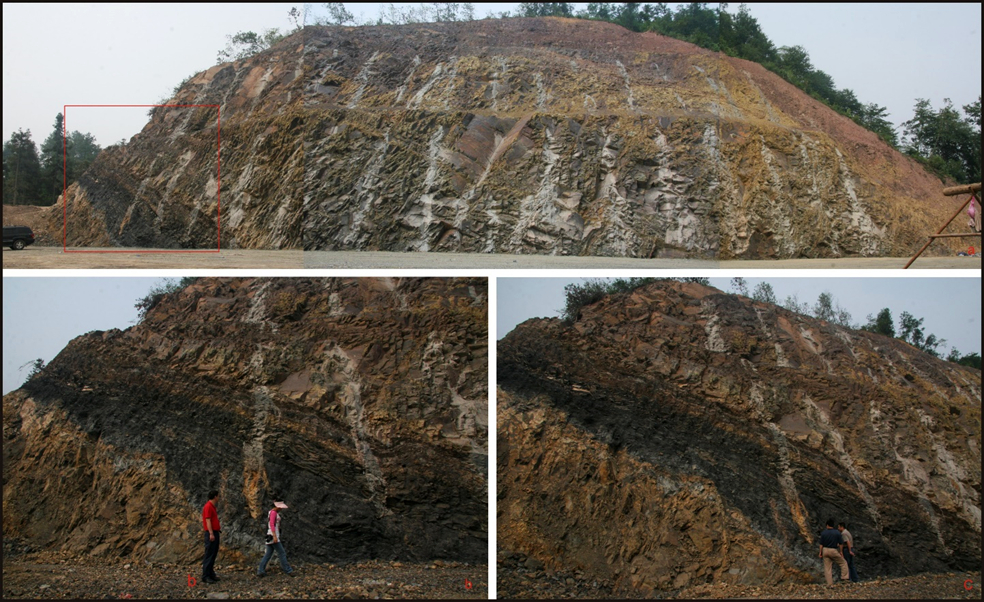Datangpo Fm
Type Locality and Naming
Guizhou. The Datangpo Fm was named by the Guizhou No.103 Party of Geology in 1967 and formally quoted by Ma Guogan et al. in 1980. The typical section is located in the Datangpo manganese mine in Songtao County, Guizhou Province.
[Figure: Type section of Datangpo Fm]
Synonym: (大唐坡组)
Lithology and Thickness
The Datangpo Fm is a suite of manganiferous rocks, which is an interglacial deposit between the underlying Gucheng tillite (Gucheng Fm) and the overlying Nantuo tillite (Nantou Fm). It is dominantly composed of black-to-black gray, thin-bedded siltstone and silty shale intercalated with manganiferous shale and limestone, with a thickness of several to about 200 m. In Songtao area of the northeast Guizhou, it is the thickest, and eastward to Hunan and Hubei, it begins to thin out. Thickness is about 200 m.
[Figure: The Datangpo Formation in Fenghuang City, Hunan Province. a-c-The section of the black shale of the Datangpo Formation overlapped by the Nantuo Formation (tillite)]
Relationships and Distribution
Lower contact
The Datangpo Gr rests conformably on the underlying Gucheng Fm tillite
Upper contact
Conformably underlies the overlying Nantuo Fm tillite
GeoJSON
Fossils
It yields microplants: Trachysphaeridum rude, T. cultum. T. Simplea; algae fossils: Eosynechococcus datangpoensis, Nanococcus vulgaris, and fungi: Eoastrion sp. etc.
Age
Depositional setting
Additional Information

